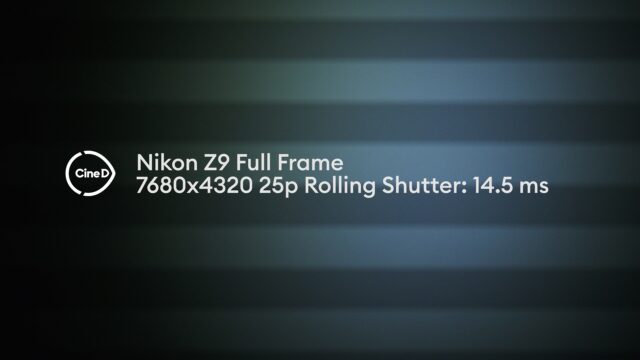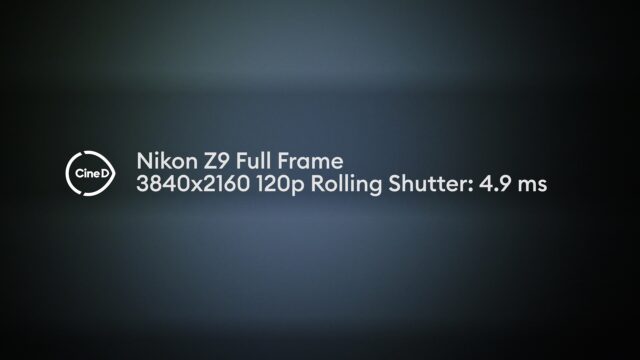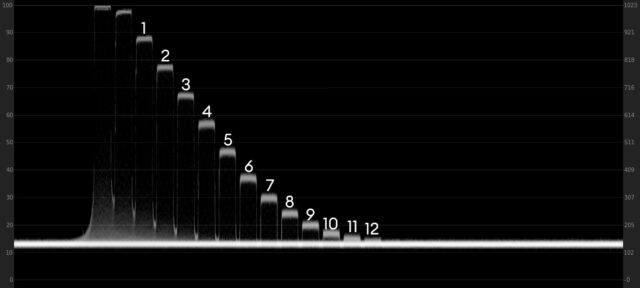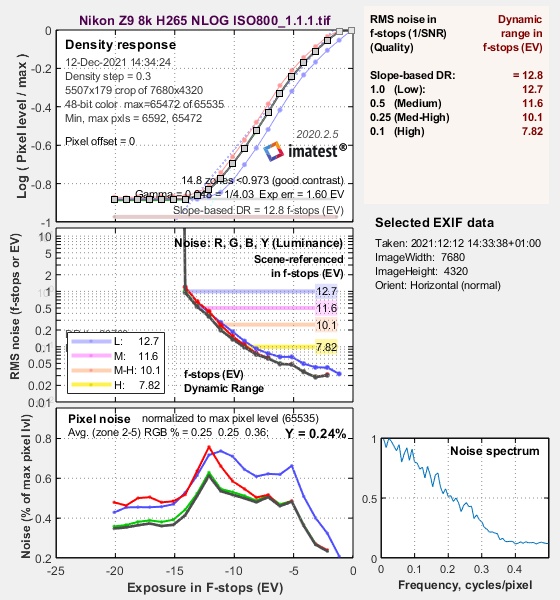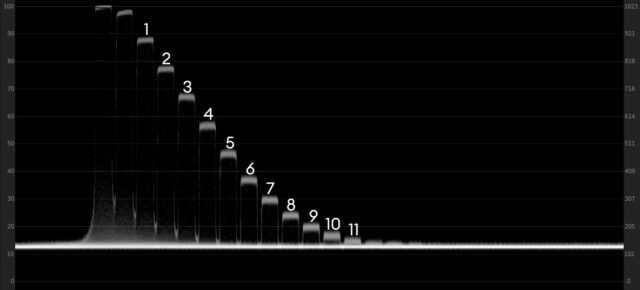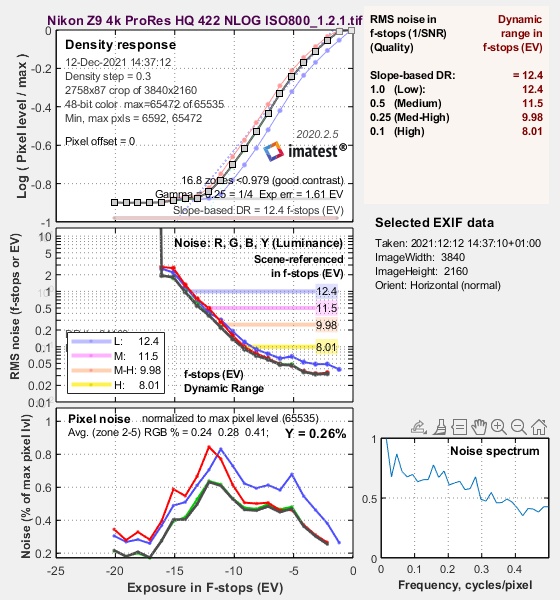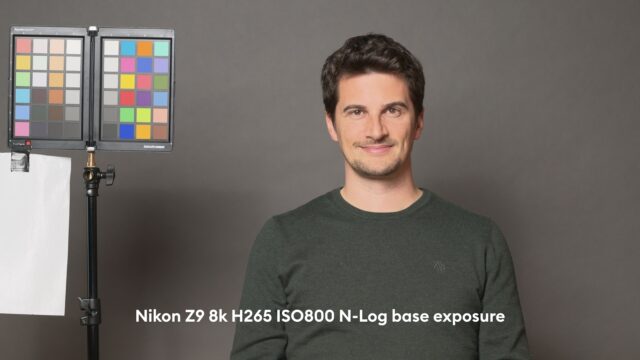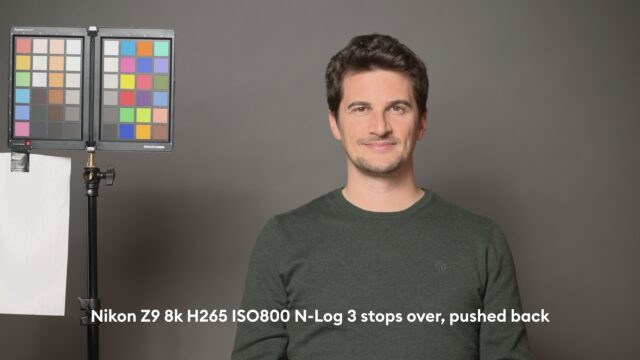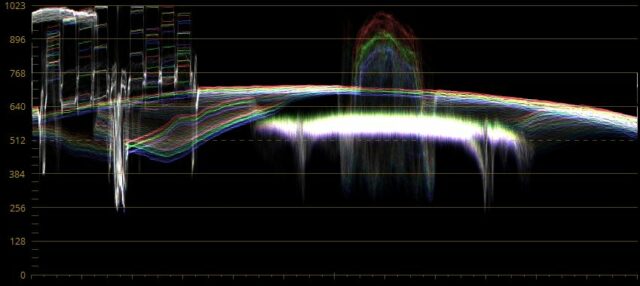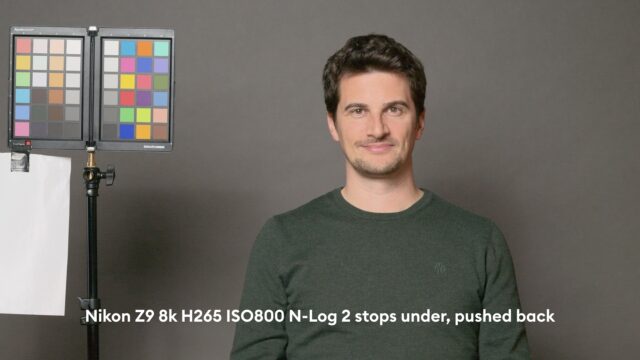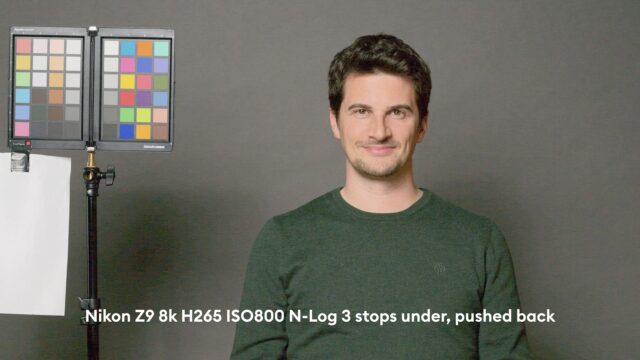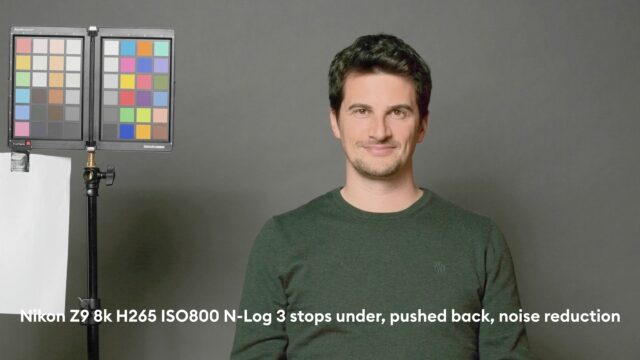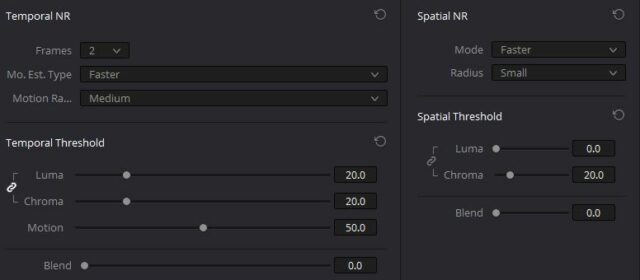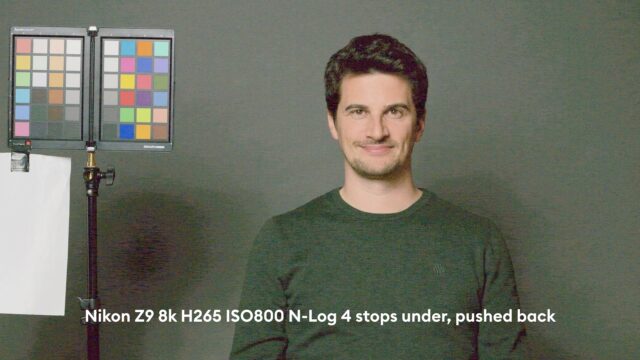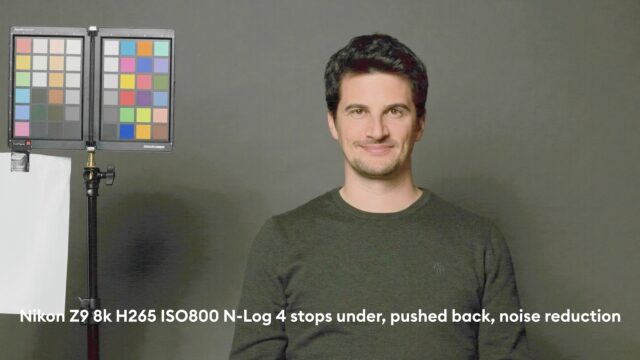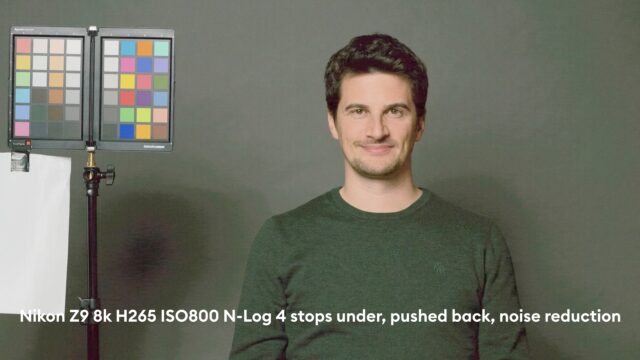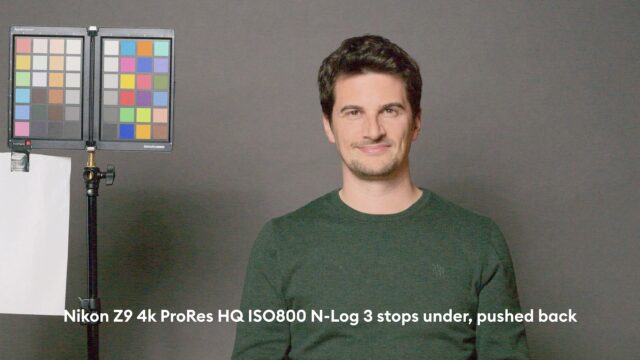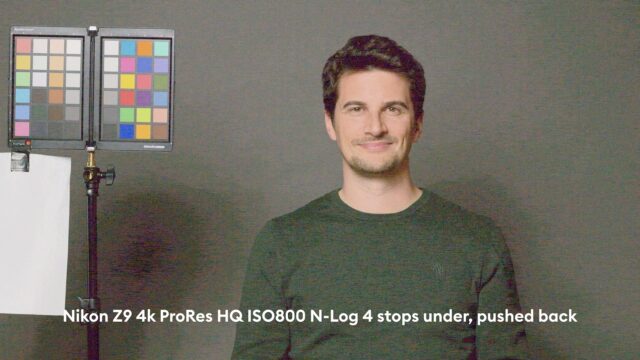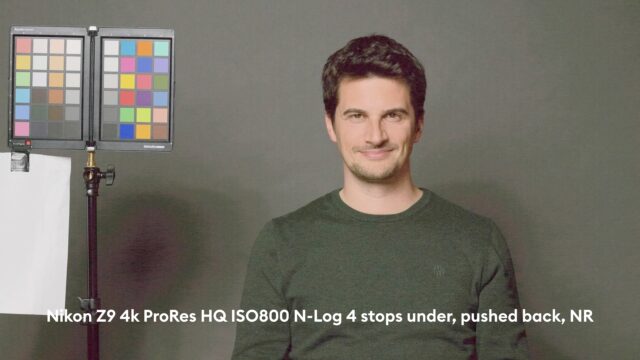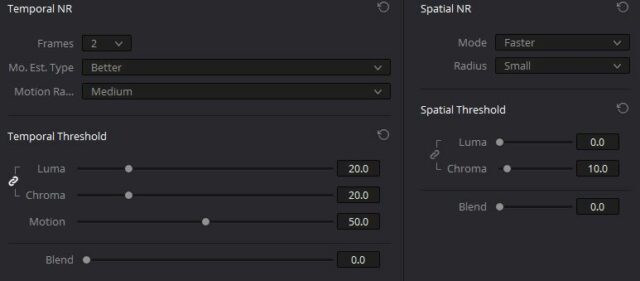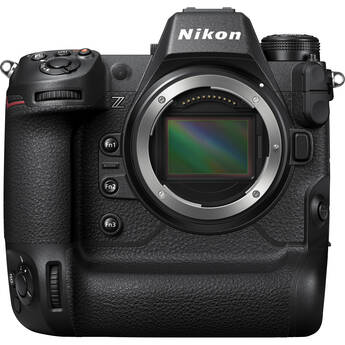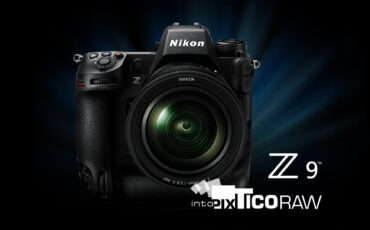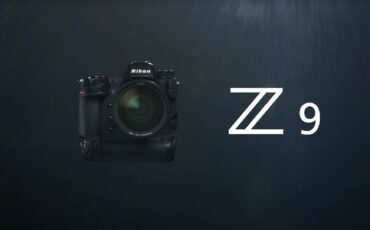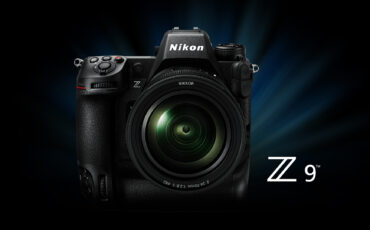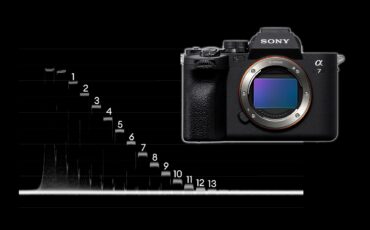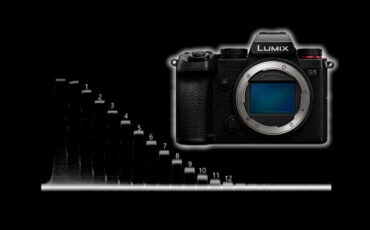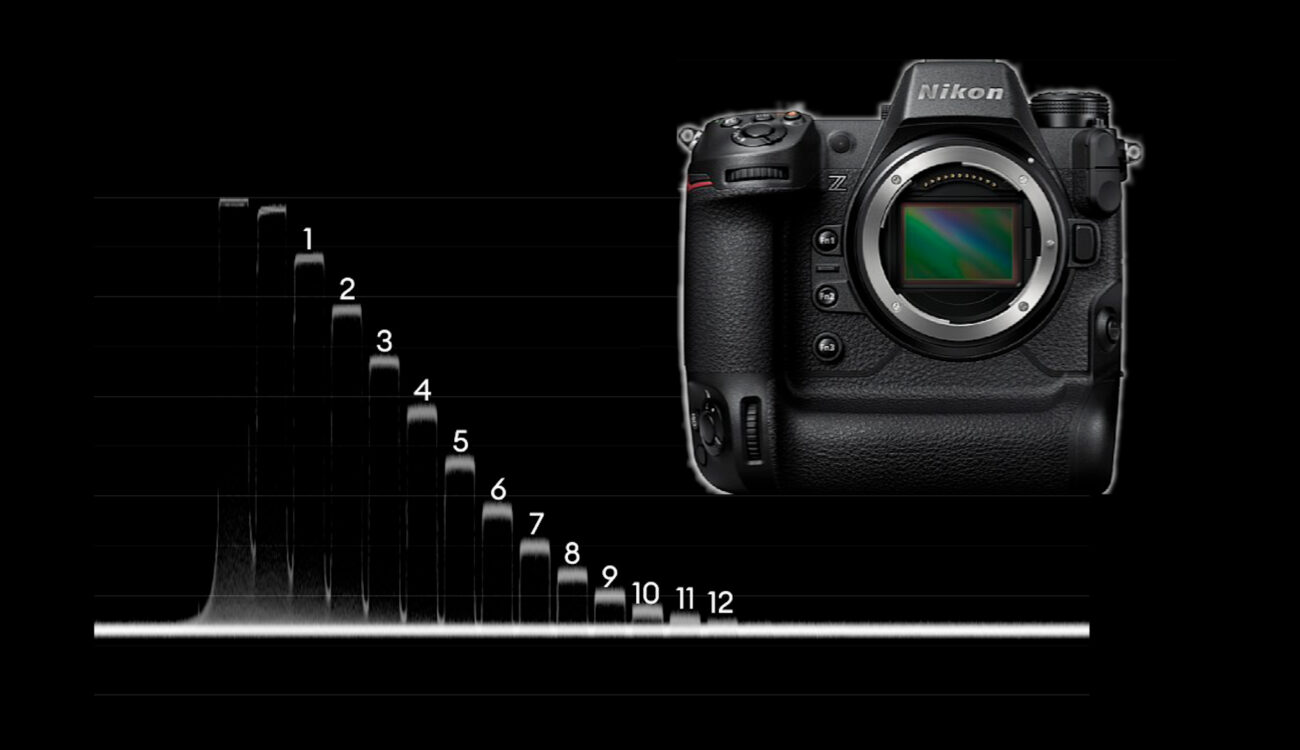
The new Nikon Z 9 full-frame camera has arrived at the CineD headquarters in Vienna – curious to hear how it fares in our lab test? Then read on … (Side note: the lab test was done on a Pre-Sale camera with final firmware installed)
The Nikon Z 9 has quite impressive specs, at least on paper – not only does it shoot 8K up to 30 frames per second in 10-bit N-Log mode plus 4K up to 120 frames, but it also features internal 4K recording in full-frame ProRes HQ 422 (you can read more about the specs here camera of the year for video here). But not only that, in a future firmware release planned for 2022 the camera will be able to record internally in 8K60p in 12-bit ProRes RAW next to 12-bit N-RAW (a variant of the TicoRAW codec internally). Very impressive.
But as usual, the image quality of a camera is not about pixel count and specs, so I was quite eager to grab this camera and run it through our lab test – and it’s quite revealing, to say the least.
Nikon Z 9 – Rolling shutter
Starting with 8k H265 mode at 25fps, we are getting a really good 14.5ms of rolling shutter (less is better):
That is about 1ms better than the Canon R5 and about 2ms better than the Sony A1. The king of the castle for mirrorless full-frame cameras in this price bracket is still the Sony a7S III with an 8.7ms rolling shutter in full-frame mode.
In full-frame 4k ProRes HQ mode, the rolling shutter stays at 14.5ms, and it drops significantly to 4.9ms in full-frame 4k 120 frames per second mode:
Those are very good results!
Nikon Z 9 – Dynamic Range at ISO800 using N-Log
If you are not familiar with how we test dynamic range, please head over here.
Starting with the internally recorded 8k H265 mode at 25fps, the waveform plot of our Xyla21 chart on an 8K timeline shows about 12 stops above the noise floor:
What I find a bit strange looking at the waveform plot, within the noise floor there is maybe one more stop, but that’s it. I ran another test using heavy noise reduction in DaVinci Resolve to see if I could “excavate” additional stops from the noise floor, but there is nothing.
Running the analysis with IMATEST we are getting 11.6 stops at a signal to noise ratio (SNR) of 2 and 12.7 stops at SNR = 1:
Well, IMATEST confirms the observation from the waveform plot above: there are about 12.7 stops max. dynamic range, but nothing more. Also, in the middle graph above the blue “12.7” line (indicating SNR = 1), there is nothing.
If we look at the measured gamma curve (first graph in the IMATEST result above) – which is the used N-Log profile – it becomes obvious what is happening. N-Log as it is designed for now cannot hold more than 13 stops. If you look at the distribution of stops on the shadow side (to the left), there is a more or less horizontal line – meaning, that there is no code value differentiation between shadow stops anymore.
Hence, it will not be possible to pull up shadows in our latitude test later without posterization/banding.
The future N-RAW mode could potentially circumvent this issue as it should allow you to pick your desired gamma curve later in post – this remains to be seen, however.
Now, let’s have a look at 4K full-frame ProRes HQ 422 mode. In theory, if the 4K is derived from proper downsampling of the sensor this mode should give significantly better dynamic range values at SNR = 2 at least (signal value stays the same by downsampling, but noise is averaged – therefore the signal to noise ratio yields a better value). Let’s start with the waveform plot on a 4K timeline:
Actually, the 4K ProRes HQ waveform plot shows 11, maybe 12 stops above the noise floor. Also, a very faint 13th stop is visible, but that’s it. IMATEST confirms this, see below:
We are getting 11.5 stops at SNR = 2 and 12.4 stops at SNR = 1. Unfortunately, it seems like the full-frame sensor is NOT properly downsampled for the 4K ProRes HQ mode. Definitely a lost chance for Nikon.
Other cameras like the Sony A1 or the Sony a7 IV are doing this 4K downsampling correctly (lab tests here and here) and hence get dynamic range results of about 12.8 stops at SNR = 2 and 14 stops at SNR = 1.
So from these results, the Nikon Z 9 has about 1 to 1.5 stops less dynamic range than recent Sony cameras. Looking at recent tests of Panasonic full-frame cameras (the S5, S1, and S1H), a rather similar conclusion is found. Let’s see if the latitude test in the next section confirms this result.
Nikon Z 9 – Latitude test
Again, we tested both the 8K H.265 and 4K ProRes HQ full-frame mode using N-Log at base ISO800.
As written before, latitude is the capability of a camera to retain detail and colors when over-or underexposed from a base exposure. This test is very revealing, as it pushes every camera to its absolute limits.
Our studio base exposure is (arbitrarily) chosen as having an (ungraded) luma value of 60% on the forehead of our subject, in this case, my dear colleague Nino on the waveform monitor. The images below were graded using the new upcoming Z 9 LUT (Z_9_N-Log-Full_to_REC709-Full_33_V01-00). This Z 9 LUT is not available yet on Nikon’s homepage, but to me looks identical to the available Z_7II_N-Log- Full_to_REC709-Full_33_V01-00 LUT.
I find this LUT a bit too saturated and pinkish, but for now, it is what it is.
From this base exposure, we increase the exposure by 3 stops, opening up the iris to F1.4 and then bringing it back in post to base exposure. Nino’s forehead is close to clipping the red channel, as the waveform plot below shows (of the ungraded clip):
At 3 stops over and pushed back, the image becomes even a bit more pinkish.
Now, let’s start to underexpose by closing down the iris of the lens and increasing the shutter speed. Not much happens between +2 and -1 stops of exposure (from base), but at 2 stops under base pushed back some noise starts to come up, but all is fine yet. The image starts to turn a bit towards the greenish side now:
At 3 stops underexposure, pushed back heavy noise starts to appear:
The static image above doesn’t show the full picture, as the noise in the moving image is quite severe at 3 stops under, pushed back. However, noise reduction can clean it up nicely (for your reference, noise reduction settings in Resolve are shown below as well):
Now let’s move on to 4 stops underexposure, pushed back in post:
The noise is becoming atrocious now, also horizontal and vertical lines are coming up. In addition, posterization/banding shows up although noise typically hides that. The image cannot be saved. Game over.
Interestingly, applying the same noise reduction settings as shown above (for the 3 stops under image) removes all color from Nino’s shirt:
Heavy banding shows up, and Nino’s hair shows some large colored blotches of chroma noise.
Hence, we have to reduce the noise reduction to retain back some of the colors:
Now, this looks better. But the banding and the horizontal and vertical stripes are still there – as mentioned, not acceptable anymore.
Unfortunately and as expected, (see the dynamic range section above), the currently implemented N-Log gamma curve does not allow to pull up shadows without heavy posterization/banding. A future N-RAW could potentially circumvent that.
So this brings us to the conclusion, that the Nikon Z 9 can do 3 stops over and 3 stops under in the latitude test – that is 6 stops.
And here, the latitude test confirms our earlier findings, that the dynamic range of the Nikon Z 9 is 1 -1.5 stops less than the competition from Sony and Panasonic. The Sony A1 showed 8 stops of latitude, as well as the Panasonic LUMIX S5, S1, and S1H. The Sony a7S III and a7 IV show 7 stops of latitude.
Just to give you our current benchmark in the lab test, the ARRI ALEXA LF has 5 stops over and 5 stops under = 10 stops of latitude. That’s 4 stops more. See our article here.
Now, you might ask if the latitude test results would be different using the internal ProRes HQ 422 mode? Well, here you go with the 3 stops underexposed shot:
Looks very similar. Let’s move on to the 4 stops under, pushed back image:
Very similar again. Also, noise reduction cannot save the 4 stops under, pushed back 4K ProRes HQ image:
As you can see, also for ProRes HQ I had to tame down the chroma noise reduction, otherwise, the image loses all its color. The ugly posterization/banding is very pronounced, rendering the image unusable.
So, no difference can be found using 4K ProRes HQ – mainly because of the aforementioned N-Log implementation. Let’s hope Nikon can come up with something like N-Log2 to better reflect the potential of this sensor in a future firmware update!
Also, I am curious to see how the future N-RAW will behave in that respect.
Summary
As mentioned earlier, the Nikon Z 9 has very very impressive specs in terms of resolution, codecs, framerates. And yes, the rolling shutter results are indeed also impressive, allowing 8K60p in the upcoming internal ProRes RAW and N-RAW modes (scheduled for 2022).
However, dynamic range results stay below expectations – the Z 9 shows about 1.5 stops less dynamic range than its competitors from Sony and Panasonic.
This result is confirmed by the latitude test – 6 stops are possible with the Nikon Z 9. That is 1 stop less than the Sony a7S III and a7 IV and 2 stops less than the Sony A1 and Panasonic S5, S1, and S1H.
Let’s hope that Nikon is able to improve the image processing pipeline in future firmware updates – potentially changing the N-Log gamma curve?
Nikon’s Response:
As we often do, we shared our lab test findings with Nikon Japan, and here is their response:
Regarding the dynamic range of H.265 and ProRes HQ, the image processing in ProRes gives priority to the resolution, so the noise processing is different from the others.
In our view, ProRes is an editing material, and it would be better if the noise processing could be done by the user.
As you know, noise reduction and resolution retention are incompatible conditions, and you have to choose between them. It is possible for the camera to perform noise reduction, but it is difficult to restore the resolution once lost by post production.
We leave the user with a choice between noise reduction and maintaining resolution.
As a result, the details in the dark areas of ProRes fill the noise floor, resulting in a low dynamic range in your assessment. Dynamic range is a very important item for users.
Nikon Japan
The Nikon Z 9 will soon be available, and I’m curious to find out if this camera is on your radar for video work in any way. If so, let us know why in the comment section below.
